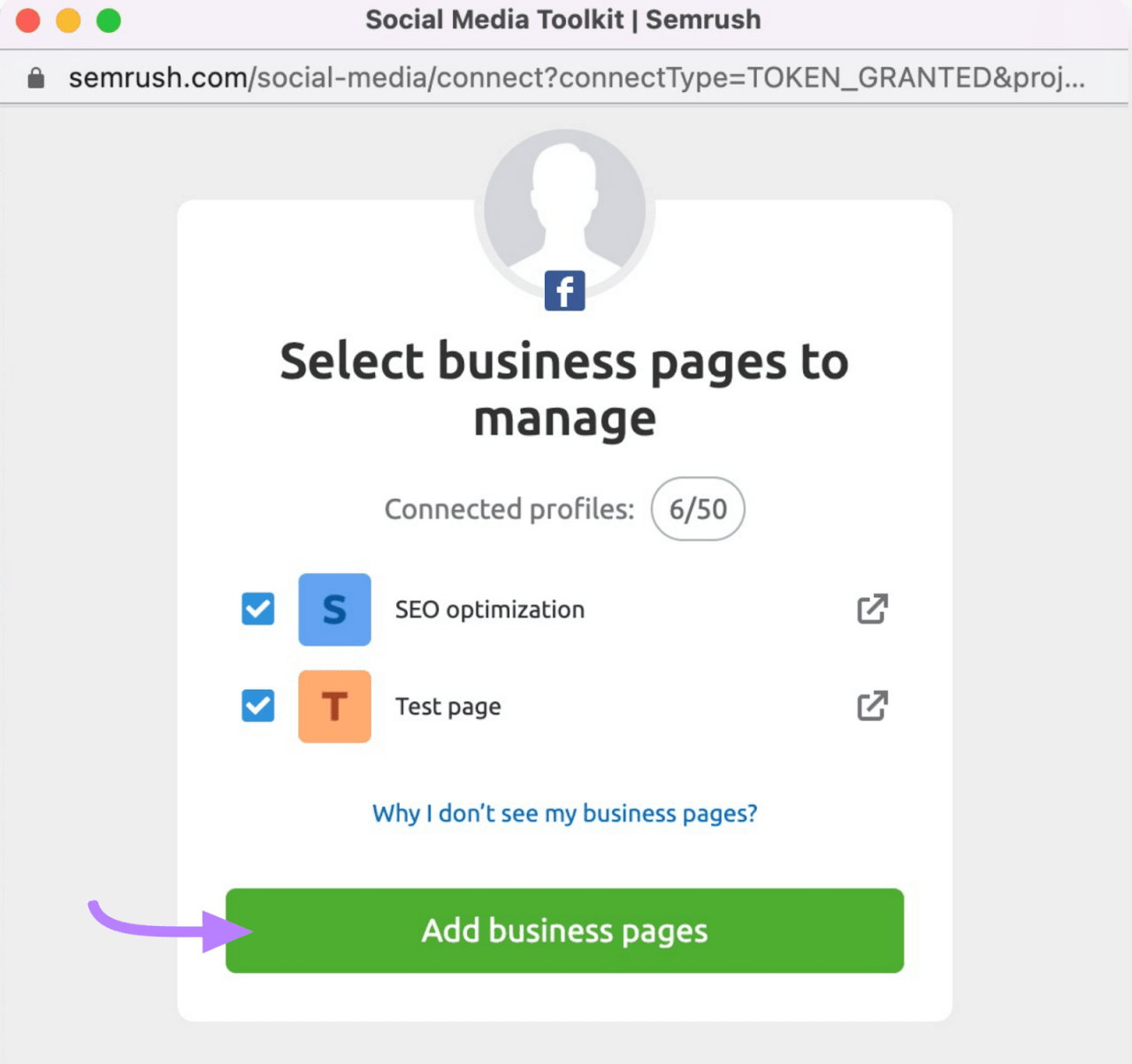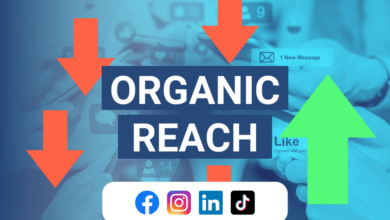
Facebook Business Manager for Multi-Location Brands
Facebook business manager for multi location brands – Facebook Business Manager for multi-location brands is a powerful tool for managing multiple locations from a central hub. It streamlines ad campaigns, content creation, and reporting across your various outlets. This guide dives deep into setting up, managing, and optimizing your Facebook presence for a seamless multi-location experience, boosting brand visibility and customer engagement.
From restaurants and retail stores to service providers, this guide covers everything from account setup to ad campaign strategies. Learn how to leverage location-based targeting, manage content across different outlets, and generate comprehensive reports to optimize your strategy and maximize your ROI. Let’s explore the effective use of Facebook Business Manager to connect with your customers in a more efficient and effective way.
Introduction to Facebook Business Manager for Multi-Location Brands

Facebook Business Manager is a powerful tool that allows businesses to manage their Facebook presence, including ads, pages, and various other functionalities, in a centralized dashboard. It’s particularly beneficial for multi-location brands, offering a structured approach to overseeing numerous locations, teams, and marketing initiatives from a single point of control. This streamlined approach improves efficiency and provides comprehensive insights into performance across all locations.A Facebook Business Manager acts as a central hub for managing all aspects of your Facebook marketing for multiple locations.
It allows you to assign roles and permissions to different team members, ensuring appropriate access to specific information and tools. This is crucial for maintaining security and controlling who has access to what, especially important for businesses with multiple locations and employees.
Utilizing Facebook Business Manager for Multi-Location Management
Facebook Business Manager enables multi-location brands to effectively manage their presence across various locations. This centralized platform allows you to create and manage separate Facebook Pages for each location, streamlining communication and providing localized content. It also facilitates the management of advertising campaigns, allowing for targeted advertising efforts across different demographics and locations. Furthermore, it helps track performance data across all locations, providing valuable insights into which marketing strategies are most effective for each area.
Benefits of Facebook Business Manager for Multi-Location Brands
The benefits of using Facebook Business Manager for multi-location brands are substantial. Centralized management of Facebook accounts for all locations leads to significant time savings and improved efficiency. This efficiency is further enhanced by the ability to assign roles and permissions to team members, allowing for streamlined workflows and collaboration. Comprehensive performance tracking across all locations provides actionable insights, allowing for data-driven decisions and optimization of marketing strategies.
Typical Workflows and Processes for Multi-Location Businesses on Facebook
A typical workflow for multi-location businesses on Facebook involves a few key steps. Firstly, setting up individual Facebook Pages for each location is crucial for localizing content and engaging with local audiences. Secondly, assigning roles and permissions within the Business Manager is essential for managing access and security. Thirdly, utilizing Facebook advertising tools to run targeted campaigns for each location is vital for reaching the specific demographic in each area.
Finally, tracking and analyzing performance data across all locations helps identify trends and optimize future marketing efforts.
Examples of Businesses Utilizing Facebook Business Manager
This table Artikels different types of businesses that can leverage Facebook Business Manager for multi-location management:
| Business Type | Facebook Page Management | Advertising Strategy | Performance Tracking |
|---|---|---|---|
| Restaurants | Creating separate pages for each restaurant, showcasing local menus, events, and promotions. | Targeted ads based on location, demographics, and customer preferences. | Tracking customer engagement, order volume, and foot traffic through Facebook insights. |
| Retail Stores | Managing separate pages for each store location, highlighting specific store offerings, and showcasing local events. | Targeted ads based on location, product preferences, and customer demographics. | Tracking website traffic, in-store sales, and online orders through Facebook insights. |
| Service Providers (e.g., salons, plumbers) | Managing separate pages for each service location, highlighting services offered, and scheduling appointments. | Targeted ads based on location, service type, and customer demographics. | Tracking customer reviews, appointment bookings, and service completion rates through Facebook insights. |
| Hotels | Managing separate pages for each hotel location, showcasing amenities, offers, and local attractions. | Targeted ads based on location, booking preferences, and customer demographics. | Tracking bookings, reviews, and customer engagement through Facebook insights. |
Setting up Facebook Business Manager for Multi-Location Brands
Managing multiple locations on Facebook requires a well-structured approach within Facebook Business Manager. This comprehensive guide provides a step-by-step process for setting up and optimizing your Business Manager for maximum efficiency. It covers adding locations, creating individual business profiles, and linking Instagram accounts, ultimately streamlining your social media presence across all your outlets.Effective multi-location management on Facebook is crucial for consistent branding and targeted marketing.
Proper setup ensures seamless communication, coordinated campaigns, and accurate reporting across all your locations. This detailed approach ensures your multi-location brand gains the most out of Facebook’s platform.
Adding Locations to Your Business Manager Account
Setting up a dedicated Facebook Business Manager account for your multi-location brand is essential. A centralized platform simplifies management and allows for coordinated campaigns and reporting. To get started, navigate to your Business Manager and locate the option to add a new location. This process involves entering the relevant details, such as location name, address, and contact information.
Creating Separate Business Profiles for Each Location
Creating distinct business profiles for each location is a critical step. This allows for tailored marketing efforts, localized content, and unique customer engagement. After adding the location details to your Business Manager, you can create a dedicated business profile for each location. Each profile should reflect the specific offerings and personality of that particular location.
Linking Instagram Accounts to Facebook Business Manager
Linking your Instagram accounts to your Facebook Business Manager allows for a unified approach to managing both platforms. It provides access to insights and reporting across both channels, streamlining your social media strategy. Ensure you have the necessary permissions on your Instagram accounts before connecting them. The process involves connecting the Instagram accounts to the relevant business profiles within your Business Manager.
Key Settings and Configurations for Multi-Location Management
Optimal management of multiple locations in Facebook Business Manager requires careful configuration. The table below Artikels key settings and configurations to consider for seamless management.
| Setting | Description | Configuration Example | Importance |
|---|---|---|---|
| Location-Specific Pages | Dedicated Facebook Pages for each location | “Cafe Delight – Downtown,” “Cafe Delight – Uptown” | Allows tailored content and ads for each location. |
| Custom Audiences | Targeting customers based on location | Create custom audiences for each location, using address data and interests | Enables targeted ads and promotions. |
| Separate Ad Accounts | Dedicated ad accounts for each location | “Cafe Delight – Downtown Ads,” “Cafe Delight – Uptown Ads” | Provides better tracking and control of ad spend and results. |
| Inventory Management | Tracking inventory across locations | Use Facebook Pixel to track inventory levels and sales for each location | Improves operational efficiency and customer experience. |
Managing Ads and Campaigns for Multiple Locations
Running targeted advertising campaigns for multiple locations requires a strategic approach that goes beyond simply duplicating ads. Effective multi-location advertising necessitates a deep understanding of each location’s unique customer base, preferences, and market conditions. This allows for tailored messaging and optimized ad spend, maximizing return on investment (ROI) for each location.Location-specific advertising strategies are crucial for reaching the right audience in each market.
A blanket approach may not resonate with local customers and may lead to wasted ad spend. A localized strategy allows for more relevant messaging and offers a higher likelihood of converting local prospects.
Targeted Ads for Each Location
Understanding your audience at a granular level is essential for effective location-specific advertising. This involves identifying key demographics, interests, and behaviors specific to each location. Leveraging Facebook’s targeting options, such as location, age, interests, and behaviors, enables you to reach the most relevant customers in each market.
Optimizing Ad Campaigns Across Different Locations
Optimizing ad campaigns for multiple locations requires a nuanced approach to ad copy, visuals, and landing pages. Each location’s unique brand identity should be reflected in the ads. The use of local language, if applicable, or culturally relevant imagery can significantly improve engagement and conversion rates.
Tracking and Analyzing Campaign Performance
Tracking and analyzing campaign performance is critical for understanding which strategies are working and which need adjustments. Facebook Ads Manager provides robust reporting features that allow for a deep dive into campaign performance for each location. Use these insights to refine targeting, ad creatives, and budget allocation to maximize results for each location. Regular monitoring allows for proactive adjustments based on performance data.
This iterative approach enables continuous improvement and ensures that ad spend is allocated effectively.
Importance of Location-Based Targeting, Facebook business manager for multi location brands
Location-based targeting is not merely a feature but a fundamental strategy for successful multi-location advertising. It allows you to focus your budget on the areas where your target customers are most likely to be found. This ensures that your ads are seen by the most relevant audience and maximizes your chances of driving conversions. By narrowing down your reach, you’re effectively directing your marketing resources to areas with a higher potential for return.
Segmenting Audiences for Each Location
| Location | Target Audience Segment | Relevant Interests | Example Ad Creative |
|---|---|---|---|
| New York City | Young professionals, tech enthusiasts, and luxury consumers | Technology, fashion, finance, nightlife | Highlighting innovative products or services, featuring luxury items, or showcasing experiences. |
| Los Angeles | Film buffs, entertainment seekers, and outdoor enthusiasts | Movies, music, outdoor activities, food | Emphasizing the local culture, showcasing products or services related to the entertainment industry, or highlighting outdoor activities. |
| San Francisco | Tech-savvy individuals, startups, and entrepreneurs | Technology, business, startups, and innovation | Promoting products or services that cater to the tech industry, highlighting innovative ideas, or showcasing opportunities for startups. |
| Austin | Music lovers, creatives, and tech-savvy individuals | Music, art, technology, and food | Promoting music events, showcasing creative products, or highlighting local restaurants. |
Content Creation and Management for Multiple Locations
Managing content for multiple locations requires a strategic approach to ensure consistent branding and engagement across all your outlets. A well-defined content calendar and effective distribution methods are crucial for optimizing reach and maximizing impact. This section will delve into strategies for crafting engaging content, managing its distribution, and maintaining a cohesive brand image across all your locations.Effective content strategies for multiple locations often focus on tailoring content to specific audiences and highlighting unique offerings in each area.
This localized approach, combined with a central brand voice, builds a strong connection with customers at each location.
Effective Content Strategies for Engaging Audiences
A multi-location strategy requires recognizing that each location has a unique audience. Successful content creation adapts to these differences. For example, a coffee shop in a bustling city center might focus on quick, grab-and-go content, while a location in a suburban area could prioritize family-friendly promotions. This personalization fosters stronger connections with local communities.
Methods for Managing and Distributing Content
Content management for multiple locations necessitates a centralized system for planning, creating, and distributing content. Using a content management system (CMS) allows for streamlined workflows and efficient collaboration among team members at each location. A well-organized system can also track performance metrics for each location. For example, a marketing team can monitor engagement levels across different locations, analyze trends, and optimize content for better results.
Creating Location-Specific Posts and Ads
Location-specific posts and ads are key to maximizing engagement. Highlighting local events, partnerships, and promotions tailored to the particular community strengthens customer connections. For instance, a restaurant might run a special promotion for a local festival or partner with a nearby business to offer a combined deal, thus catering to the unique interests of the local area.
Maintaining a Consistent Brand Image
Consistency in brand messaging, visuals, and tone is crucial for maintaining a recognizable and trustworthy identity. This includes using a standardized set of brand colors, fonts, and imagery across all platforms. Using a style guide helps ensure consistency, ensuring all content adheres to the established brand standards. A consistent brand image across all locations builds trust and fosters a sense of familiarity with your brand.
Best Practices for Content Calendar Management
A well-structured content calendar ensures all content is planned and distributed efficiently. A centralized platform for scheduling and tracking posts across all locations facilitates a seamless workflow. This calendar should account for local events, promotions, and seasonal trends. Managing content across multiple locations demands a comprehensive approach that integrates planning, creation, distribution, and performance monitoring.
| Category | Best Practice | Example |
|---|---|---|
| Content Planning | Establish a centralized content calendar with clear deadlines and responsibilities. | Assign a team member at each location to contribute local event details to the calendar. |
| Content Creation | Develop templates for location-specific posts, using a central style guide. | Use a template for location-specific Facebook posts that includes the store’s logo, opening hours, and contact information. |
| Content Distribution | Utilize social media scheduling tools for automated posting across all locations. | Use Hootsuite or Buffer to schedule posts across all Facebook pages simultaneously. |
| Performance Tracking | Monitor engagement metrics (likes, shares, comments) for each location. | Track impressions and click-through rates for location-specific ads. |
Reporting and Analytics for Multi-Location Brands

Understanding your multi-location brand’s performance across different outlets is crucial for strategic decision-making. Facebook Business Manager provides powerful tools to track key metrics and generate comprehensive reports, enabling you to optimize marketing strategies and resource allocation for each location. Effective reporting allows for the identification of high-performing locations and areas needing improvement.
Key Metrics to Track for Each Location
Understanding the performance of each location requires tracking specific key metrics. These metrics should be tailored to the specific goals and objectives of each location. For example, a location focused on in-store sales might prioritize metrics like website traffic and in-store foot traffic, whereas another location focused on online orders might prioritize website conversions and order fulfillment. Analyzing these metrics allows for a granular understanding of each location’s strengths and weaknesses.
- Sales Revenue: Track the total revenue generated by each location. This is a crucial metric to assess the profitability and overall performance of each outlet.
- Website Traffic: Monitor the volume of website visits and traffic sources from each location. This can highlight successful marketing efforts and pinpoint areas needing improvement.
- Customer Engagement: Measure the level of customer interaction, such as likes, comments, and shares on Facebook posts, for each location.
This provides insights into customer engagement and brand sentiment.
- Conversion Rates: Track the percentage of website visitors who complete desired actions (e.g., making a purchase, signing up for a newsletter). This metric is crucial for understanding the effectiveness of marketing efforts.
- Cost per Acquisition (CPA): Calculate the cost of acquiring a customer at each location. This helps determine the efficiency of advertising campaigns.
Managing a Facebook Business Manager for multiple locations can be tricky, requiring meticulous organization and a solid strategy. It’s all about efficient campaign management across different outlets. Learning from industry leaders like Morgan Flatley, Global CMO at Morgan Flatley global CMO , can offer valuable insights into optimizing these efforts. Ultimately, a well-structured Facebook Business Manager is key for any multi-location brand looking to maximize its digital presence.
Methods for Monitoring Location Performance
Effective monitoring of multiple locations requires a structured approach. Utilizing Facebook Business Manager’s reporting features is essential for analyzing performance trends across all locations. Implement consistent data collection procedures across all locations to ensure accurate comparisons. This may involve using specific tracking codes for each location or implementing a centralized reporting system.
- Establish Standardized Metrics: Define consistent metrics for each location to ensure accurate comparisons. This ensures consistency in reporting and facilitates better analysis of performance across different locations.
- Utilize Facebook Insights: Leverage Facebook’s built-in reporting tools to monitor key performance indicators (KPIs) for each location. This provides valuable data on engagement, reach, and conversion rates.
- Implement Tracking Codes: Utilize unique tracking codes for each location to differentiate data and provide specific insights into each outlet’s performance.
This is vital for accurate analysis and reporting.
- Regular Reporting Schedules: Schedule regular reporting intervals to track performance trends. This enables proactive adjustments to strategies and allows for timely responses to emerging issues.
Generating Comprehensive Reports on Location Performance
Combining the data from multiple locations into a single report is critical for identifying overarching trends and patterns. This allows for the creation of actionable insights to improve the performance of all locations. Employing a centralized dashboard or reporting system will allow for an aggregated overview.
- Create Custom Reports: Customize reports to focus on specific metrics and insights relevant to your business objectives. Tailoring reports to focus on key performance indicators for each location allows for more granular analysis and informed decisions.
- Visualize Data: Use charts and graphs to effectively visualize performance trends and highlight key patterns across all locations. Visual representation of data enables easier identification of trends and anomalies.
Managing a Facebook Business Manager for multiple locations can be tricky. You need a system that’s intuitive and easy to use, which directly impacts the overall user experience. Understanding what user experience (UX) truly means is key to crafting an effective strategy. what is user experience is essentially how a user interacts with your business’s online presence.
This is crucial for your Facebook Business Manager, making sure your multi-location brand is easy to navigate and find information on. Good UX design will translate into more customers and better engagement for your various locations.
- Comparative Analysis: Conduct comparative analysis of each location’s performance against established benchmarks and targets. This helps pinpoint areas needing improvement and allows for strategic adjustments.
Using Data to Inform Decisions and Optimize Strategies
Data analysis provides crucial insights to optimize strategies for each location. This allows for targeted adjustments to marketing campaigns and resource allocation. Identify underperforming locations and develop targeted strategies to address their specific needs. Analyzing data allows for an in-depth understanding of each location’s performance, leading to effective strategic adjustments.
Facebook Business Manager Reports and Metrics for Multi-Location Brands
| Report Type | Key Metrics | Location-Specific Insights | Actionable Insights |
|---|---|---|---|
| Campaign Performance | Cost per acquisition (CPA), Conversion rates, Return on ad spend (ROAS) | Identify high-performing ad sets for each location. | Optimize ad budgets and targeting for underperforming locations. |
| Engagement Reports | Likes, Comments, Shares, Reach | Assess audience engagement for each location’s content. | Tailor content strategies based on audience preferences for each location. |
| Website Traffic Reports | Website visits, Bounce rate, Time on site | Analyze website traffic sources for each location. | Improve website user experience and content relevance for each location. |
| Sales Reports | Total revenue, Average order value, Conversion rates | Identify top-performing products or services for each location. | Optimize inventory and pricing strategies based on sales data for each location. |
Challenges and Solutions for Multi-Location Brands
Managing multiple locations on Facebook Business Manager presents unique challenges. Maintaining a consistent brand identity, streamlining marketing efforts, and ensuring effective communication across all sites require careful planning and execution. This section will delve into common obstacles and offer practical solutions to navigate these complexities.Effective multi-location Facebook management requires a comprehensive strategy that addresses both operational and creative needs.
From ensuring consistent branding to facilitating seamless communication, this section Artikels actionable steps for success.
Managing a Facebook Business Manager for multiple locations can be tricky. You need a strong strategy, and often, a specialist in digital content creation to help. Fortunately, a skilled digital content specialist like Kelly Jacobson can help optimize your presence across all your locations. This expertise translates directly into more effective Facebook campaigns for multi-location brands.
Maintaining Consistent Branding Across Locations
Maintaining a cohesive brand identity across multiple locations is crucial for building brand recognition and trust. Inconsistencies in visual elements, messaging, or customer service can damage brand perception. A unified brand voice and visual language across all locations create a seamless customer experience, regardless of the physical location.
- Visual Consistency: Standardized logos, color palettes, typography, and imagery across all locations are vital. Templates for social media posts, website designs, and in-store displays should be consistent and easily accessible to all locations. Using a centralized design system ensures everyone is on the same page, avoiding mismatched visuals and ensuring a unified brand image.
- Messaging Consistency: Develop a clear brand voice and messaging strategy. Define the brand’s personality, values, and key messages. Create standardized templates for website copy, social media posts, and customer communications. Training staff on the brand voice and guidelines will ensure consistent communication across all locations.
Streamlining Marketing Efforts Across Multiple Locations
Centralized marketing tools and strategies can significantly enhance efficiency. By consolidating marketing efforts, multi-location brands can avoid duplicated efforts and ensure all locations benefit from unified campaigns.
- Centralized Advertising Management: Utilize Facebook Business Manager to manage advertising campaigns for all locations from a single dashboard. This allows for better tracking of results, consistent budget allocation, and efficient ad optimization. By grouping ad sets based on location, brands can tailor campaigns to specific markets. This centralized approach ensures efficiency and avoids redundancy.
- Shared Content Library: Create a centralized content library that all locations can access. This library should include high-quality images, videos, and other marketing materials. Locations can draw from this shared repository to create consistent and engaging content, minimizing duplication and ensuring a unified brand experience.
Ensuring Effective Communication and Collaboration
Clear communication and collaboration are essential for successful multi-location management. Regular meetings, clear communication channels, and shared access to information will streamline operations.
- Dedicated Communication Channels: Establish a dedicated communication channel (e.g., a shared messaging platform, a central email account) to ensure quick and efficient information exchange between locations. This allows for rapid updates on campaigns, customer feedback, and operational issues. Regular check-ins and updates are critical for maintaining alignment.
- Regular Reporting and Analysis: Implement a system for tracking key performance indicators (KPIs) across all locations. This will provide insights into individual location performance and identify areas for improvement. Regular reporting will allow for proactive adjustments and informed decision-making.
Best Practices and Tips for Success: Facebook Business Manager For Multi Location Brands
Setting up Facebook Business Manager for multiple locations is a significant step, but maximizing its potential requires a strategic approach. Effective management involves more than just creating separate pages; it demands a structured system for collaboration, content creation, and customer interaction across all locations. This section provides actionable strategies for optimizing your Facebook Business Manager and achieving success.Effective multi-location management requires a clear understanding of best practices.
A well-defined structure streamlines operations, enabling consistent branding and messaging across all locations while fostering efficient collaboration. This approach ensures a unified brand experience for your customers and allows for scalable growth.
Optimizing Facebook Business Manager
A robust Facebook Business Manager setup is crucial for managing multiple locations effectively. This includes clear roles and responsibilities for each location, allowing for streamlined communication and task delegation. Establish a central point of contact for all location-related inquiries, ensuring that information is consistently disseminated. Regularly review and update the Business Manager settings to adapt to changing needs and evolving strategies.
Efficient Management and Collaboration
Establishing clear communication channels is paramount for collaboration among multiple locations. Utilizing internal messaging tools or dedicated project management software facilitates seamless information sharing. Define clear workflows for content creation, campaign management, and customer service responses to ensure consistency. Implementing a system for tracking key performance indicators (KPIs) across all locations allows for data-driven decisions and performance analysis.
Staying Updated with Latest Features
Keeping abreast of the latest Facebook Business Manager features is essential. Regularly explore new tools and functionalities to identify opportunities for improving efficiency and maximizing reach. Attend webinars, read blog posts, and follow Facebook’s announcements to stay informed about the latest updates and best practices. This proactive approach will equip your team with the skills to leverage new features effectively.
Proactive Monitoring and Responsive Customer Service
Implementing a system for proactive monitoring of customer interactions is crucial. This includes regularly reviewing comments, messages, and reviews across all locations. Establish clear guidelines for responding to customer inquiries and addressing concerns promptly. Responding to reviews, both positive and negative, is vital for building brand reputation and customer loyalty. A well-defined customer service protocol ensures consistent, professional interactions across all locations.
Handling Customer Inquiries and Reviews
Managing customer inquiries and reviews effectively is critical for maintaining a positive brand image. A structured approach is needed to ensure consistent responses and efficient resolution.
| Best Practice | Description | Example | Impact |
|---|---|---|---|
| Establish a Centralized System | Designate a central point for handling customer inquiries and feedback across all locations. | Create a dedicated email address or customer service platform to receive inquiries from all locations. | Ensures consistent response times and avoids customer confusion. |
| Develop a Standardized Response Protocol | Develop a template for addressing common inquiries and issues, ensuring consistency across all locations. | Create pre-written responses for frequently asked questions (FAQs). | Maintains a professional image and ensures timely resolutions. |
| Track and Analyze Customer Feedback | Monitor reviews and feedback to identify trends and areas for improvement. | Use a spreadsheet or CRM to categorize and analyze reviews by location. | Identifies areas of improvement in customer service and product/service quality. |
| Respond to Reviews Promptly and Professionally | Respond to reviews, both positive and negative, within a reasonable timeframe. Address concerns directly and professionally. | Respond to a negative review acknowledging the issue and offering a solution. | Demonstrates responsiveness and commitment to customer satisfaction, building trust and loyalty. |
End of Discussion
In conclusion, Facebook Business Manager empowers multi-location brands to manage their presence effectively across multiple locations. By streamlining processes, optimizing campaigns, and providing insightful reporting, businesses can enhance their brand visibility and customer engagement. Implementing these strategies can lead to significant growth and improved ROI.





